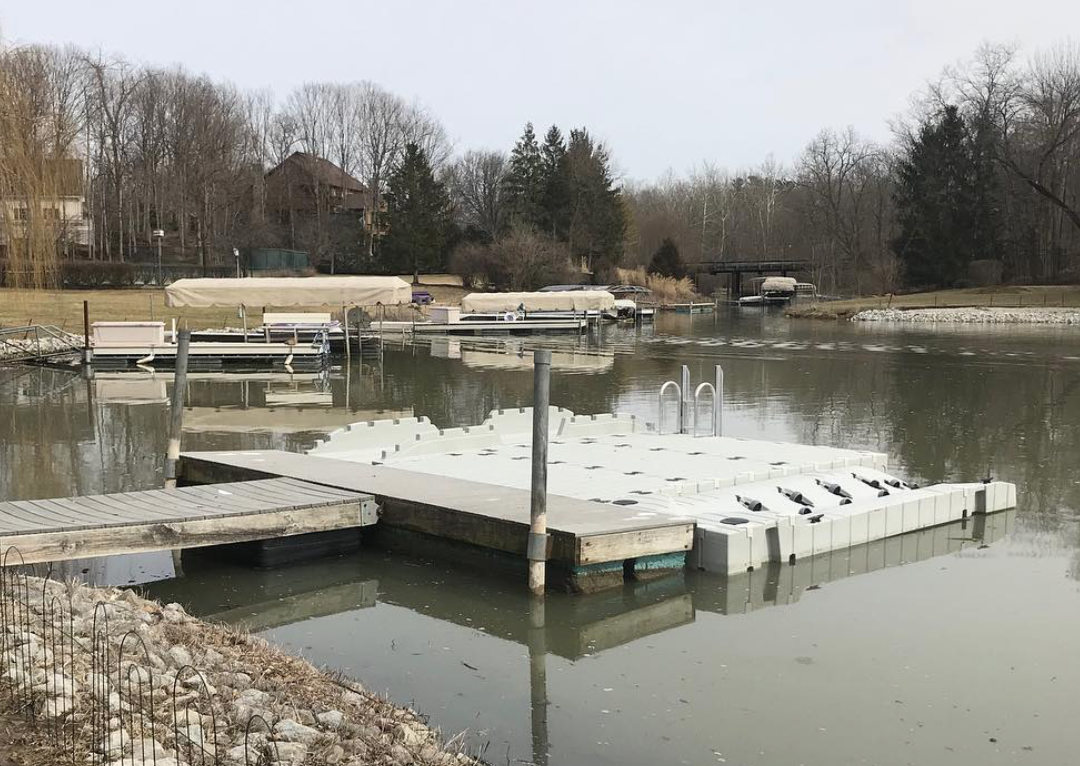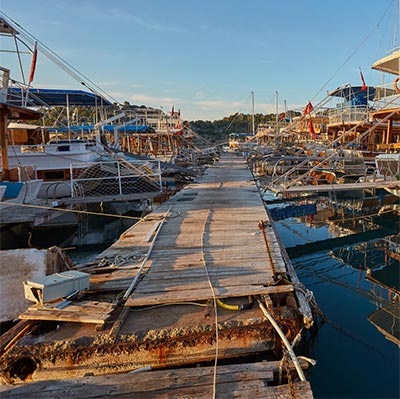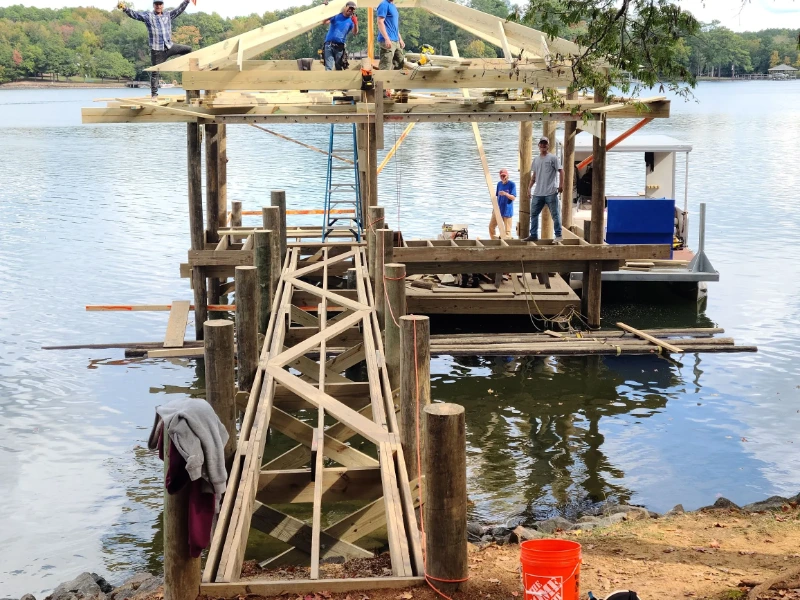Effective Dock Repair Work Techniques: Guaranteeing Architectural Integrity
Guaranteeing the architectural stability of anchors with effective repair service methods is vital for the durability and safety and security of aquatic facilities. This involves a multi-faceted approach starting with thorough examinations making use of sophisticated innovations like sonar tools and remotely operated lorries (ROVs) to detect both noticeable and concealed damages. Ultimately, picking the best repair products, such as composite materials and corrosion-resistant alloys, is important for sturdiness. Structural support approaches, including the application of cross-bracing systems and load-distribution plates, play an important duty in mitigating stress and anxiety points. The relevance of these techniques ends up being evident when checking out innovative repair work methods and preventative upkeep strategies.
Examining Dock Damages
Evaluating dock damages is a crucial initial step in ensuring the architectural honesty and safety of any type of docking center. This initial assessment includes a comprehensive evaluation to determine both hidden and visible damages. Secret elements to take a look at consist of the dock's structure, pilings, decking, and equipment. Each part should be inspected for indicators of wear, rot, corrosion, or other forms of degradation that could compromise the structural integrity.
Structural engineers or certified assessors commonly execute these assessments using specialized devices and strategies. As an example, underwater examinations could use finder tools or from another location operated cars (ROVs) to spot immersed damages. Above water, visual examinations are matched by using moisture meters and various other diagnostic devices to discover underlying issues not quickly visible to the naked eye.

Choosing Repair Work Products
Picking the suitable repair service materials is a crucial action in the dock repair process, one that straight affects the longevity and efficiency of the repaired framework. Product option have to be driven by variables such as ecological conditions, load-bearing needs, and compatibility with existing dock elements.
In addition to timber, composite materials are significantly popular as a result of their durability and reduced upkeep requirements. Compounds, generally made from a mix of plastic and wood fibers, use excellent resistance to rot, pests, and UV damage. For steel anchors, choosing corrosion-resistant alloys such as galvanized steel or marine-grade light weight aluminum is necessary to protect against rust and make sure structural stability in saline water conditions.
Epoxy resins and marine-grade sealants are indispensable for repairing fractures and securing joints, giving a waterproof barrier and improving the dock's total toughness. By meticulously choosing top quality materials, dock repair services can attain durable outcomes, thereby protecting against future deterioration and making certain secure, reputable usage.
Architectural Support Strategies
Effective structural reinforcement methods are vital in making certain the security and longevity of dock repairs. One fundamental approach involves using steel or composite support bars (rebar) within concrete frameworks. Rebar supplies added tensile strength, protecting against cracks and dispersing loads a lot more equally. This technique is specifically reliable for anchors revealed to hefty loads or extreme environmental problems.
One more important strategy is the application of fiber-reinforced polymers (FRP) These products provide high strength-to-weight proportions and superb resistance to deterioration, making them suitable for enhancing concrete or wooden anchors. FRP can be applied in sheets or strips and bound with epoxy materials to improve structural stability.
Bracing and securing systems also play a critical duty in architectural support. Cross-bracing, using steel or wooden light beams, can counteract side forces, lowering swaying and motion. Securing systems, such as helical piers or driven piles, get redirected here give a steady structure by transferring tons to much deeper, a lot more stable soil layers.
Last but not least, the assimilation of load-distribution plates can assist distribute weight a lot more evenly across the dock's surface area, reducing local stress factors. These techniques collectively ensure that anchors stay risk-free and durable, efficient in enduring the roughness of their operational atmosphere.
Advanced Repair Techniques

An additional sophisticated strategy entails undersea welding, which enables repair services to be carried out without the requirement to dewater the area. This method is particularly advantageous for addressing architectural problems in submerged dock components, ensuring marginal interruption to operations. Enhanced welding strategies, paired with robotic systems, provide precision and integrity, thereby extending the life-span of the dock.
Furthermore, cathodic protection systems are implemented to stop rust in metallic dock frameworks. By utilizing sacrificial anodes or amazed existing systems, these strategies efficiently mitigate the electrochemical procedures that cause material deterioration.
Finally, progressed tracking innovations, such as architectural health and wellness monitoring (SHM) systems, give real-time information on the problem of dock structures. These systems enable positive maintenance and prompt interventions, eventually ensuring the long-lasting structural stability of the dock.
Upkeep and Avoidance
Maintenance and avoidance are basic ideas that underpin the long life and security of dock frameworks. Regular assessments are paramount, enabling early discovery of damage, potential weak points, and ecological influences. A positive strategy, involving routine look for corrosion, rot, and structural shifts, alleviates costly fixings and prolongs the dock's operational life.
Preventative steps need to include applying safety finishings to check this site out steel parts to guard against rust and making use of treated wood to withstand degeneration. In addition, guaranteeing appropriate drain and air flow can prevent water accumulation, which is a common source of structural deterioration. Incorporating quality materials and adhering to producer guidelines during building and repair service stages also play important functions in boosting durability.

Educating workers in dock maintenance ideal methods guarantees regular application of safety nets. Leveraging technical developments, such as drones for inspections and sensing units for real-time monitoring, can additionally improve upkeep efforts. By prioritizing maintenance and avoidance, dock owners can ensure architectural stability, operational safety and security, and cost-efficient administration over the dock's lifespan.
Verdict
In verdict, maintaining the structural stability of aquatic centers requires thorough dock repair strategies. Advanced repair work methods, combined with normal upkeep techniques, make certain the dock continues to be risk-free and operational under varied ecological conditions.
Making sure the architectural stability of docks with efficient repair service methods is vital for the durability see it here and security of marine facilities.Selecting the appropriate fixing products is an essential step in the dock remediation process, one that directly affects the long life and efficiency of the repaired structure.Effective architectural support methods are important in making certain the security and long life of dock fixings. By focusing on maintenance and prevention, dock proprietors can make sure structural integrity, operational safety and security, and cost-efficient monitoring over the dock's life-span.
In verdict, preserving the structural honesty of aquatic centers necessitates comprehensive dock fixing methods.
Comments on “Seasonal Preparations: When to Arrange Your Dock Repairs”